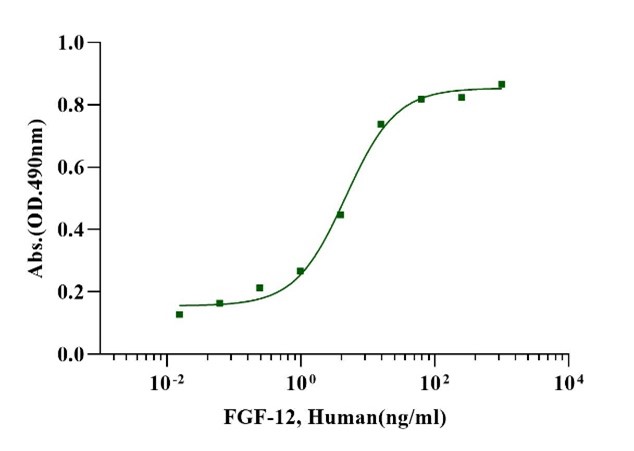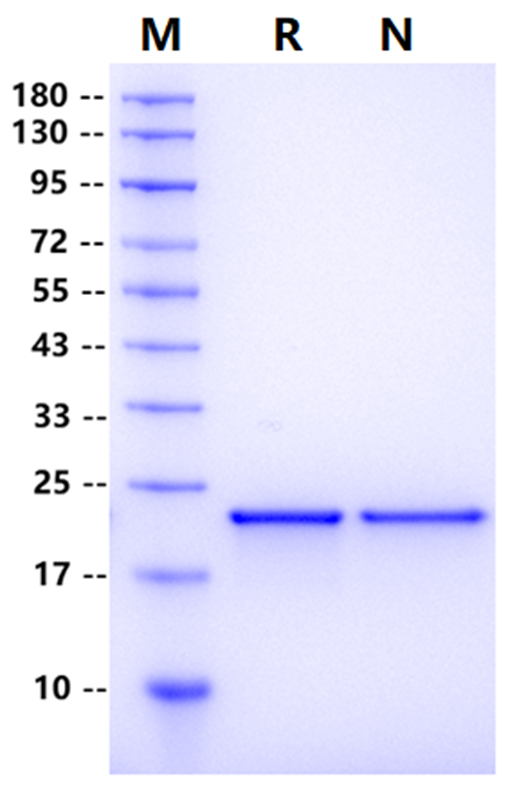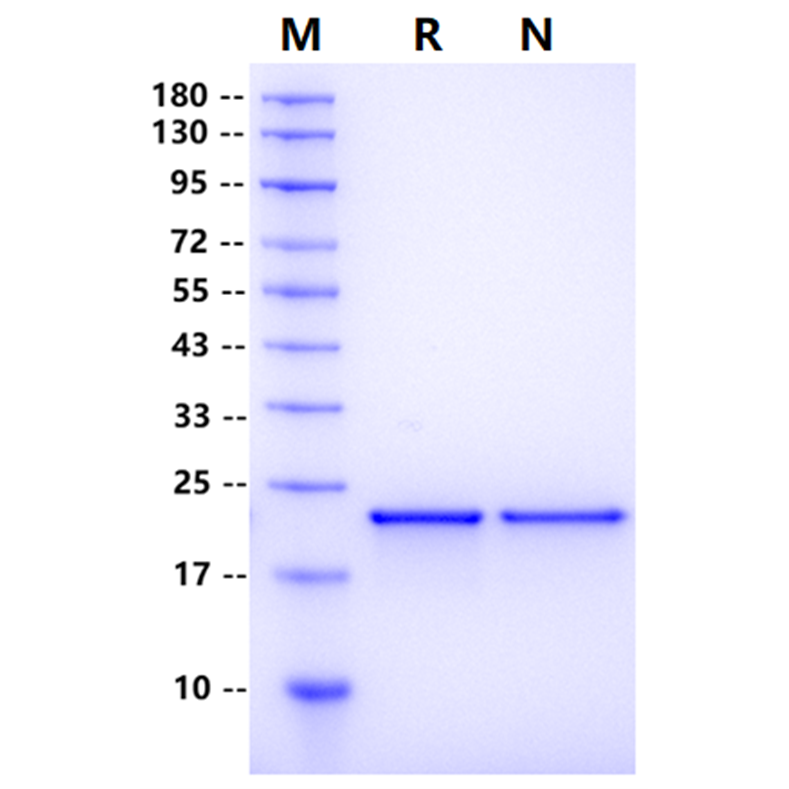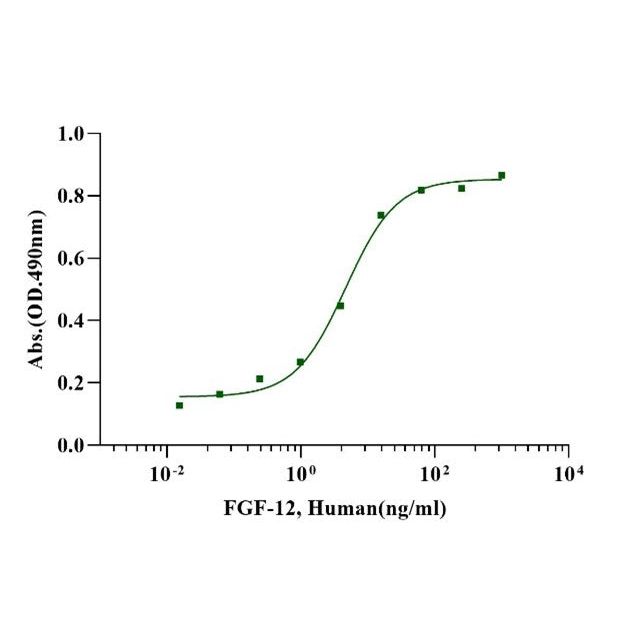Measured in a cell proliferation assay using NIH-3T3 mouse fibroblast cells. The EC50 for this effect is less than 5ng/ml.
Product Details
Product Details
Product Specification
| Species | Human |
| Antigen | FGF-12 |
| Synonyms | Fibroblast growth factor homologous (FHF-1), Myocyte-activating factor, FGF12B |
| Accession | P61328-2 |
| Amino Acid Sequence | Met1-Thr181 |
| Expression System | E.coli |
| Molecular Weight | 21kDa |
| Purity | >95% by SDS-PAGE |
| Endotoxin | <0.1EU/μg |
| Conjugation | Unconjugated |
| Tag | No Tag |
| Physical Appearance | Lyophilized Powder |
| Storage Buffer | 20mM PB, 150mM NaCl, 1mM DTT, 1mM EDTA, pH 7.4 |
| Reconstitution | Reconstitute at 0.1-1 mg/ml according to the size in ultrapure water after rapid centrifugation. |
| Stability & Storage | · 12 months from date of receipt, lyophilized powder stored at -20 to -80℃. · 3 months, -20 to -80℃ under sterile conditions after reconstitution. · 1 week, 2 to 8℃ under sterile conditions after reconstitution. · Please avoid repeated freeze-thaw cycles. |
| Reference | 1. Am J Physiol Heart Circ Physiol. 2015 Jun 15;308(12):H1463-73. |
Background
Fibroblast growth factor 12 (FGF-12), also known as fibroblast growth factor homologous factors (FHF), is cytosolic proteins that is homologous to fibroblast growth factors but is not secreted. FGF12 modulates both cardiac Na+ and Ca+ channel by binding to the conserved proximal part of the C-terminal domain of voltage-gated sodium channels Nav1.5. However, a single missense mutation in FGF12-B (Q7R-FGF12) reduced binding to the NaV1.5 C-terminus, yielding a Brugada Syndrome phenotype.
Picture
Picture
Bioactivity

SDS-PAGE

1μg (R: reducing condition, N: non-reducing condition).




